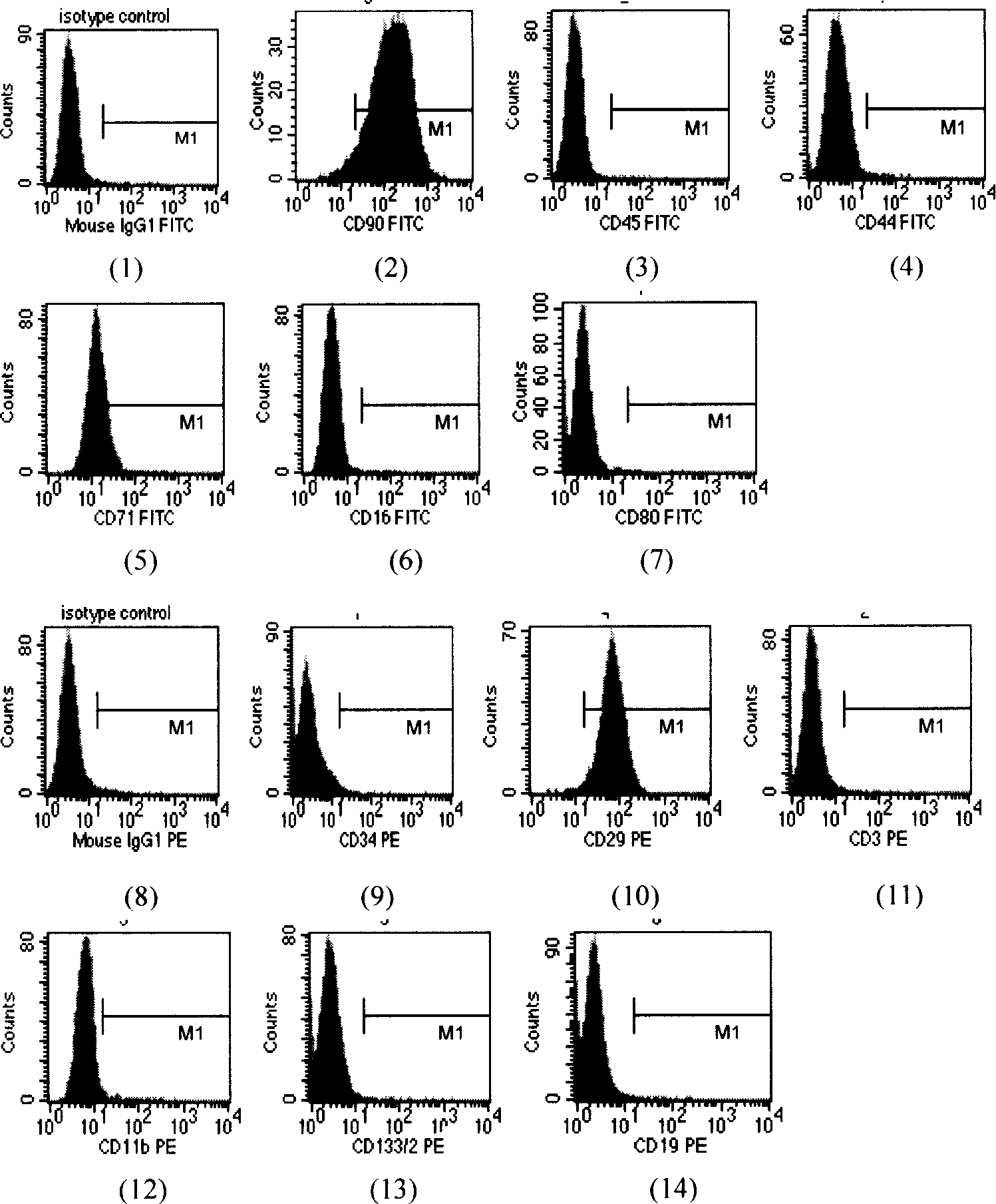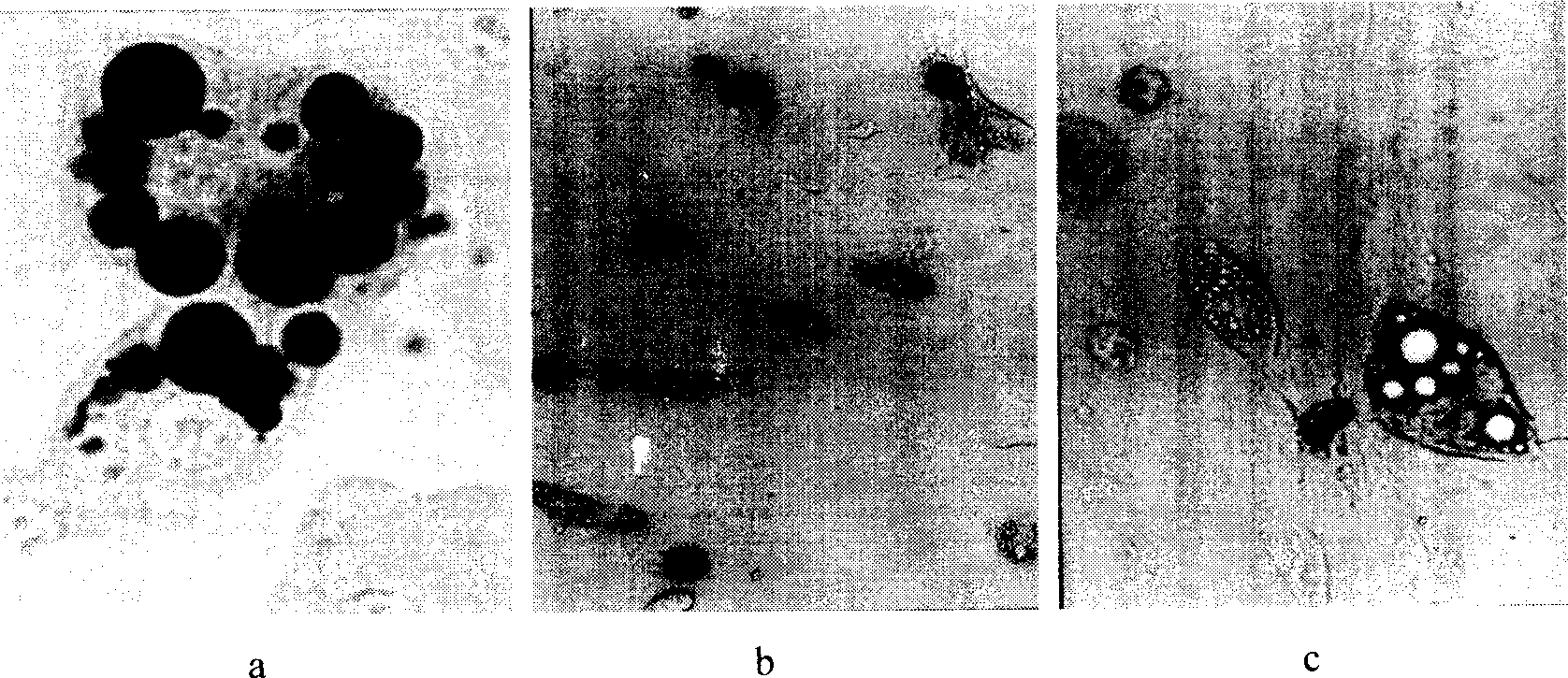Structural method and application of tissue engineering adipose tissue
A technology of adipose tissue and tissue engineering, applied in biochemical equipment and methods, tissue culture, bone/connective tissue cells, etc., can solve problems such as loss of cell activity, and achieve broad application prospects and huge market value potential
- Summary
- Abstract
- Description
- Claims
- Application Information
AI Technical Summary
Problems solved by technology
Method used
Image
Examples
Embodiment 1
[0050] Example 1 In vitro isolation and culture expansion of adipose tissue-derived stem cells:
[0051] Rinse the aspirate obtained from liposuction repeatedly with phosphate buffered saline solution (PBS), then add PBS to it, stir and place until clarified to remove damaged tissue, blood and some red blood cells, etc., and then add collagen with a concentration of about 0.1% Enzymes, digested at 37°C for 45 minutes with gentle agitation. Centrifuge at 1500 rpm for 5 minutes, collect the cell pellet, and suspend the pellet in erythrocyte lysate (Tris-NH 4 C1), after standing at room temperature for 10 minutes, the cells were collected by centrifugation again. This process was repeated twice to break up and remove as many red blood cells as possible. The cell suspension was centrifuged to collect the lower cell sediment, and then the viability of the cells was detected by the bromophenol blue dye exclusion method and the proportion of living cells was counted.
[0052] Surv...
Embodiment 2
[0053] Example 2 Identification of surface markers of adipose tissue-derived stem cells
[0054] The stem cells derived from adipose tissue cultured and expanded at passage 5 were collected, digested with 0.25% trypsin, and centrifuged. After washing the cells twice with PBS, resuspend the cells with 1ml PBS and count. Adjust the cell concentration to 1 x 10 with PBS 6 pcs / ml, according to 5×10 5 Each cell / tube was divided into several EP tubes, and PE or FITC-labeled multiple antibodies (CD90, CD44, CD45, CD71, CD16, CD30, CD34, CD29, CD3, CD11b, CD133 and CD19) were tested separately. Combine, add to each tube, incubate at room temperature for 30min, then wash twice with PBS, add 0.5ml PBS to resuspend the cells, and use flow cytometry to detect and identify the surface markers of the cultured and amplified cells. The results showed that the adipose tissue-derived stem cells had positive expression of CD90, CD29 and CD71, indicating that they were a type of stem cells der...
Embodiment 3
[0055] Example 3 Directed Induced Differentiation and Application of Adipose Tissue-derived Stem Cells to Adipocytes
[0056] Use DMEM medium containing 10% FBS, 1 μM dexamethasone, 10 μM insulin, 200 μM indomethacin, 1% penicillin / streptomycin, 0.5 mM IBMX under normal conditions (37 ° C, 5% CO 2 ) to continue culturing the adipose tissue-derived stem cells. After culturing for 7-15 days, take the induced cultured cell clones, fix with methanol for 2 minutes, rinse with 50% alcohol, add Oil Red O dye for 10 minutes, rinse with 50% alcohol, rinse with water, counterstain with hematoxylin for 1 minute, observe the staining under a microscope In normal cases, oil red O staining was positive, which indicated the presence of lipid vesicles in the cells. According to this feature, it can be judged that the stem cells have shown a tendency to differentiate into mature adipocytes. Adipose tissue-derived stem cells that are undifferentiated or partially differentiated into adipocytes...
PUM
 Login to View More
Login to View More Abstract
Description
Claims
Application Information
 Login to View More
Login to View More - Generate Ideas
- Intellectual Property
- Life Sciences
- Materials
- Tech Scout
- Unparalleled Data Quality
- Higher Quality Content
- 60% Fewer Hallucinations
Browse by: Latest US Patents, China's latest patents, Technical Efficacy Thesaurus, Application Domain, Technology Topic, Popular Technical Reports.
© 2025 PatSnap. All rights reserved.Legal|Privacy policy|Modern Slavery Act Transparency Statement|Sitemap|About US| Contact US: help@patsnap.com



